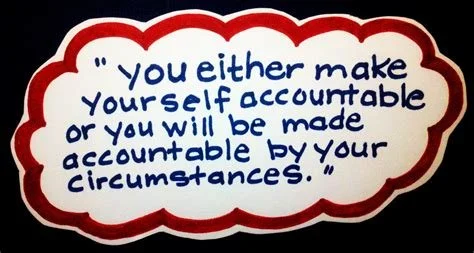HRO 15d Principle 8: Accountability Part 1
Introduction
In their description of High Reliability Organizing (HRO), Weick and Sutcliffe (2007, W&S hereafter) identified five characteristics of organizations practicing HRO:
Failure focus,
Simplification resistance,
Operations sensitivity,
Resilience in design and operation, and
Expertise deference
I have slightly reworded the characteristics from Weick and Sutcliffe’s phrasing to conform to a common abbreviation, FSORE.
These characteristics are necessary, but not sufficient for practicing HRO. The additional principles I propose are part of the structure that supports the W&S five. Without these additional principles, an organization’s HRO practice will be ineffective.
Three additional principles are missing from the W&S list. I have identified and justified two in prior posts, Training, and Assessment. Training is a deep organizational commitment to detailed technical and theoretical training. Assessment is a pervasive focus on understanding the organization, its personnel, its equipment, and its processes from multiple perspectives by internal and external audits. It is the embodiment of “you get what you inspect, not what you expect.”
In the next two posts, I explore the concept of accountability in-depth and why it is essential for HRO. Accountability is potentially the most powerful motivator for human reflection and learning (Tetlock 1992). Both are essential for HRO. Accountability exists at all levels in HRO: training, operations, assessment, equipment performance, and maintenance. In this post, I discuss what accountability is and the precursors necessary to make it effective. In the next post, I will explain the natural inclination of people and organizations to escape accountability and how accountability functions in HRO. All the references for the accountability posts are at the end of the first post.
What Accountability Is
Accountability is the process whereby a person may be required to justify their decisions, understandings, and actions to others (Lerner & Tetlock, 1999). The many accountability processes in HRO evaluate and sanction variance from behavioral norms, organizational standards, and technical requirements (Olsen, 2017). Detection of variance is the province of assessment, which I have discussed previously.
Responsibility and accountability are not interchangeable. The feature that distinguishes responsibility (what one is supposed to do) from accountability (judgment of whether it was done) is an external audience. External assessors evaluate the outcomes of the responsible party’s behavior (Lerner & Tetlock, 1999). High personal standards are laudable, but a person can only truly be judged and held accountable by someone else.
Accountability has three parts: who is accountable to whom, what a person is accountable for (i.e., responsibilities), and the mechanisms used to hold a person accountable ( Peteet, Witvliet, Glas, & Frush, 2023). In HRO, people are accountable for meeting technical requirements, conformance to standards, project outcomes, and supporting the cultural norms of the organization. Accountability is ineffective if it is disconnected from responsibility or inconsistent.
Accountability—being held to account—links an individual’s decisions and behaviors with their outcomes. In HRO, every position in the organization has responsibilities documented in organizational records. All job descriptions include lists of responsibilities. Every program in HRO has auditable outcome standards. The process of enacting accountability (how the checking is done) is part of the norms, history, regulatory environment, and culture of an organization (Frankel, Leonard, & Denham, 2006).
Precursors for Accountability
Effective accountability depends on facing facts (more on this later) and clear responsibilities. Rickover advised guarding against confirmation bias (Rickover, 1979). This is focusing only on data that confirms what one assumes or wants to be true. Assessments at all levels of the organization, if thorough and performed by trained personnel, will regularly provide evidence that people, machines, and management processes are not working as expected. If they don’t, they aren’t effective.
Training is essential for accountability because assessors have to understand what they are evaluating, what their decision options are, who to tell, and the possible consequences of the decisions they make about what they learn. Assessment includes all facets of organizational performance: design, operations, maintenance, emergency response, and training. In Rickover’s words, assessment is the “use of frequent, thorough, and detailed audits of all aspects of the program by individuals who are specifically selected and trained.”
People are especially vulnerable to ignoring evidence or weak signals of problems (something that doesn’t quite “look right”) when they feel personal responsibility as the leader of a project and have invested time in trying to make it successful. It isn’t easy to admit that what you’re doing isn’t working. When you’ve dug yourself into a hole, digging harder won’t get you out. Facing the fact that you were wrong involves embarrassment, guilt, and possibly shame. These are negative emotions that humans seek to avoid even if they have to ignore data to do so (Lerner & Tetlock, 1999; Schmader & Lickel, 2006).
Facing facts requires members practicing HRO to execute “systematic follow up on the deficiencies” generated by assessments (Rickover, 1979). Rickover summed up his approach to facing facts thusly:
If conditions require it, you must face the facts and brutally make changes despite significant costs and schedule delays. There have been a number of times during the course of my work that I have made decisions to stop work and redesign or rebuild equipment to provide the needed high degree of assurance or satisfactory performance. The person in charge must personally set the example in this area and require his subordinates to do likewise (Rickover, 1979, p.5).
Rickover noted the necessity of making changes despite additional costs or delays. This doesn’t mean cost and schedule don’t matter. The cost of facing facts isn’t just financial either. It could be negative impacts on one’s reputation. A commitment to accepting the costs of recognizing and correcting mistakes reflects a belief that the costs and schedule delays are lower BEFORE a major problem occurs. This is a core belief of HRO.
The second requirement for accountability is having clear responsibilities so organizational members know who to hold accountable for what. In the nuclear Navy , ADM Rickover’s description of responsibility is considered the last word on this important concept. In terms of vividness and concrete language, it is hard to beat:
Responsibility is a unique concept. It can only reside and inhere in a single individual. You may share it with others, but your portion is not diminished. You may delegate it, but it is still with you. You may disclaim it, but you cannot divest yourself of it. Even if you do not recognize it or admits its presence, you cannot escape it. If responsibility is rightfully yours, no evasion or ignorance or passing the blame can shift the burden to someone else. Unless you can point your finger at the man who is responsible when something goes wrong, then you have never had anyone really responsible (Rickover, 1979).
This statement is considered so important that it is displayed on posters, conference room walls, and brass plaques on the doors of senior leaders.
Breaking Rickover’s statement into parts identifies the key attributes of responsibility. Responsibility:
“… is a unique concept,” signals that this definition of responsibility is special and important.
“… can only reside and inhere in a single individual,” making it a personal construct. This is a departure from common language that speaks of organizations and teams as having responsibility for things. From this perspective, only individuals in an organization can be responsible for executing its mission and projects. Job descriptions in HRO are *accountability* descriptions because they so often include “is responsible for …”
“You may delegate it, … but you cannot divest yourself of it. Even if you do not recognize it or admits its presence, you cannot escape it.” Responsibility cannot be escaped or shifted to others even though some people try really hard. These people don’t last long in HRO.
“… no evasion or ignorance or passing the blame can shift the burden.” Even if not acknowledged, it cannot be denied, ignored, or evaded as long as it is written down and understood. Responsibility is a function of the position a person holds in the organization. One’s personal preference or attitude has no impact on their responsibilities. Experienced workers in HROs are acculturated to have hair-trigger sensitivity to efforts to evade responsibility.
“If responsibility is rightfully yours …” This is a motivation for being as clear as possible in HRO about responsibilities. Organizations practicing HRO seek to reduce ambiguity in responsibilities as much as possible.
Being able to “point your finger at the man who was responsible” is a powerful metaphor and an aggressive definition of accountability. Sometimes it’s not a metaphor! It is the sine qua non of responsibility in HRO. In critiques, it is often necessary to “point the finger at” the people responsible for errors. I’ll have more to say on that in the next post.
It might seem circular to argue that a principle like accountability itself has precursors, but that’s the point. It IS circular because both Rickover and W&S argued that the principles they enumerated ONLY work when they function as a system. Each part of the system is necessary and impacts the others.
Summary
Accountability in HRO depends on facing facts with “brutal honesty” and following up no matter where they lead or what has to be changed. As Rickover (1979) noted, sometimes the hardest part of the changes is admitting that what you were doing before wasn’t working. Changing course can have both monetary and personal costs, but leaders of organizations practicing HRO believe that the cost of making changes is always preferable to accepting the risks of an organizational accident. They have to set a personal example.
“Facing facts” sounds easy, but is very difficult given the human propensity to ignore or bury unpleasant information and assume that things are going well. “Frequent, thorough, and detailed audits of all aspects” of an organization are the only ways to override the hope that things will work out for the best. Hope isn’t acceptable in HRO.
There can be no accountability without clear statements of responsibility that are understood throughout the organization. If you never expect a finger to get pointed at you, then you aren’t responsible.
This concludes my first post on Accountability, my candidate for the third and final HRO principle missed by W&S. In the next post, I will discuss how people and organizations avoid accountability, the role accountability plays in HRO, and why it is essential.
References
Aleksovska, M., Schillemans, T., & Grimmelikhuijsen, S. (2019). Lessons from five decades of experimental and behavioral research on accountability: A systematic literature review. Journal of Behavioral Public Administration, 2(2), 1-18.
Argyris, C. (1994). Good communication that blocks learning. Harvard Business Review, 72(4), 77-85.
Baumeister, R. F., Stillwell, A. M., & Heatherton, T. F. (1994). Guilt: An interpersonal approach. Psychological bulletin, 115(2), 243-267.
Bowins, B. (2004). Psychological defense mechanisms: A new perspective. The American Journal of Psychoanalysis, 64(1), 1-26.
Brown, A. D., Stacey, P., & Nandhakumar, J. (2008). Making sense of sensemaking narratives. Human Relations, 61(8), 1035-1062.
Cramer, P. (1998). Coping and Defense Mechanisms: What's the Difference?. Journal of Personality, 66(6), 919-946.
Cramer, P. (2015). Understanding defense mechanisms. Psychodynamic Psychiatry, 43(4), 523-552.
Cummins, R. A., & Nistico, H. (2002). Maintaining life satisfaction: The role of positive cognitive bias. Journal of Happiness Studies, 3, 37-69.
Duncan, F. (1990). Rickover and the nuclear navy: The discipline of technology. Naval Institute Press.
Frankel, A. S., Leonard, M. W., & Denham, C. R. (2006). Fair and just culture, team behavior, and leadership engagement: The tools to achieve high reliability. Health Services Research, 41(4p2), 1690-1709.
Frink, D.D & Klimnoski, R.J.(2004). Advancing accountability theory and practice: Introduction to the human resource management review special edition. Human Resource Management Review, 14(1), 1–17.
Hall, A. T., Frink, D. D., & Buckley, M. R. (2017). An accountability account: A review and synthesis of the theoretical and empirical research on felt accountability. Journal of Organizational Behavior, 38(2), 204-224.
Hearings on Military Posture and HR 9240, 90th Cong. (1967), Rickover, H.G., https://www.google.com/books/edition/Hearings/W6PC20rnD7IC?gbpv=1&dq=%22Responsibility+is+a+unique+concept%22&pg=PA1798&printsec=frontcover
Kruger, J., & Dunning, D. (1999). Unskilled and unaware of it: How difficulties in recognizing one's own incompetence lead to inflated self-assessments. Journal of Personality and Social Psychology, 77(6), 1121–1134.
Lerner, J. S., & Tetlock, P. E. (1999). Accounting for the effects of accountability. Psychological Bulletin, 125(2), 255-275.
Lei, Z., Naveh, E., & Novikov, Z. (2016). Errors in organizations: An integrative review via level of analysis, temporal dynamism, and priority lenses. Journal of Management, 42(5): 1315-1343.
McLeod, S. (2008). Self concept. Simply Psychology. Retrieved from https://www.simplypsychology.org/self-concept.html
McGraw, K. M. 1987. Guilt following transgression: An attribution of responsibility approach. Journal of Personality and Social Psychology, 53(2): 247-256.
Olsen, Johan P. 2017. Democratic Accountability and the Terms of Political Order. European Political Science Review, 9(4): 519–37. https://doi.org/10.1017/ S1755773916000084.
Orth, U., & Robins, R. W. (2014). The development of self-esteem. Current Directions in Psychological Science, 23, 381-387. http://dx.doi.org/10.1177/0963721414547414
Peteet, J. R., Witvliet, C. V. O., Glas, G., & Frush, B. W. (2023). Accountability as a virtue in medicine: from theory to practice. Philosophy, Ethics & Humanities in Medicine, 18(1), 1–6. https://doi.org/10.1186/s13010-023-00129-5
Reason, J. (1990). Human error. Cambridge University Press.
Rickover, H.G. (1977 February 10). Thoughts on man's purpose in life. https://nielsolson.us/Writing/RickoverRotaryAddress10FEB77.html
Rickover, H.G. (1979). Statement before the House Subcommittee on Energy Research and Production of the Committee of Science and Technology (May 24, 1979).
Rickover, H.G. (1983). An assessment of the gpu nuclear corporation organization and senior management and its competence to operate tmi - 1. Archives & Special Collections, Waidner-Spahr Library, Dickinson College. Retrieved from https://archives.dickinson.edu/sites/all/files/files_document/TMI-Alert_4-9-9-14.pdf
Rochlin, G. I., La Porte, T. R., & Roberts, K. H. (1987). The self-designing high-reliability organization: Aircraft carrier flight operations at sea. Naval War College Review, 40(4), 76-90.
Sandberg, J., & Tsoukas, H. (2015). Making sense of the sensemaking perspective: Its constituents, limitations, and opportunities for further development. Journal of Organizational Behavior, 36: S6-S32.
Schmader, T., & Lickel, B. (2006). The approach and avoidance function of guilt and shame emotions: Comparing reactions to self-caused and other-caused wrongdoing. Motivation and Emotion, 30, 42-55.
Tangney, J. P. (1990). Assessing individual differences in proneness to shame and guilt: development of the self-conscious affect and attribution inventory. Journal of Personality and Social Psychology, 59(1), 102– 111.
Tangney, J. P., Stuewig, J., & Mashek, D. J. (2007). Moral emotions and moral behavior. Annu. Rev. Psychol., 58, 345-372.
Tetlock, P. E. (1985). Accountability: The neglected social context of judgment and choice. In L. L. Cummings, & B. M. Staw (Eds.), Research in Organizational Behavior (Vol. 7, pp. 297–332). JAI Press.
Tetlock, Philip E. 1992. The impact of accountability on judgment and choice: Toward a social contingency model. In Advances in Experimental Social Psychology, Vol 25 331–76. Elsevier.
Van Dyck, C., Frese, M., Baer, M., & Sonnentag, S. 2005. organizational error management culture and its impact on performance: A two-study replication. Journal of Applied Psychology, 90(6): 1228-1240.
Weick, K.E. (1995). Sensemaking in organizations. Sage.
Weick, K.E., Sutcliffe, K.M. (2007). Managing the unexpected: Assuring high performance in an age of complexity. Jossey-Bass.



